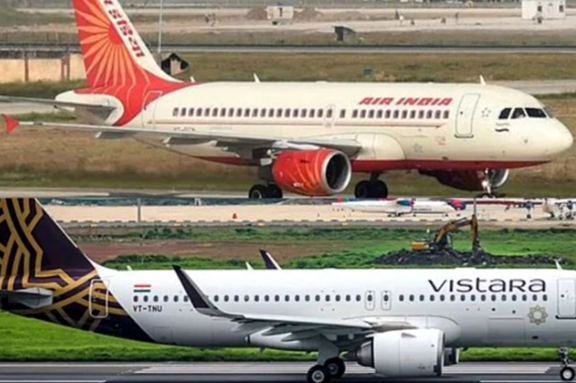Air India and Vistara Merger
The merger of Air India and Vistara marks an important shift in the aviation landscape. This strategic move aims for enhanced efficiency and profitability. The merger is expected to save over ₹500 crore annually. It will also strengthen Air India’s position in both domestic and international markets.
Financial Implications
The merger is projected to yield substantial cost savings. Annual savings of ₹500 crore will stem from renegotiated contracts. These include agreements related to operations, fuel, and catering. The combined entity aims for a total cost saving of ₹1,800 crore by FY27. This financial discipline is crucial for achieving sustainable profitability.
Transformation Journey
Air India is currently in its Vihaan.AI transformation program. This initiative consists of three phases – Taxi, Take-off, and Climb. The Climb phase focuses on integrating operations with Vistara. This integration aims to enhance customer value and drive profitability.
The merger allows for streamlined operations. Air India can reduce redundancies, which is vital for efficiency. A unified entity can negotiate better rates for bulk procurement. This capability enhances overall cost-efficiency in operations.
Market Positioning
The merged airline will be better equipped to face industry challenges. Fluctuating fuel prices and competitive pressures are ongoing concerns. A larger footprint will enable the airline to adapt and respond effectively.
Air India plans to retain the Vistara experience for customers. The airline will retrofit its legacy aircraft to improve service quality. The upgrade of the narrowbody fleet is expected to be completed by mid-2025.
Stakeholder Impact
Singapore Airlines, a stakeholder in Vistara, anticipates an important non-cash gain. This gain is estimated at SGD 1.1 billion ($832.45 million) post-merger. Following the merger, Singapore Airlines will hold a 25.1 per cent share in the new entity.
Future Outlook
Both Air India and Vistara have struggled with profitability. However, the merger aims to change this trend. The goal is to transition the balance sheet from losses to profits by FY27. The focus will be on reinvesting in fleet expansion, customer service, and technology. This merger represents a very important moment for Air India. It sets the stage for a more competitive and efficient airline in the evolving aviation market.
Important Facts for Exams:
- Vihaan.AI: Vihaan.AI is Air India’s transformation programme. It consists of three phases. The final phase is called Climb. This phase focuses on integrating operations with Vistara.
- SGD: SGD stands for Singapore Dollar. It is the official currency of Singapore. The currency is abbreviated as SGD in international markets. One SGD is approximately 0.75 USD.
- Road to Profitability: Road to Profitability is Air India’s strategic initiative. It aims to achieve profitability by FY27. The merger with Vistara is a key component of this strategy.
- Narrowbody Fleet: The narrowbody fleet refers to aircraft with a single aisle. These planes are typically used for short-haul flights. Air India plans to retrofit its narrowbody fleet by mid-2025.
Month: Current Affairs - November, 2024
Category: Economy & Banking Current Affairs


